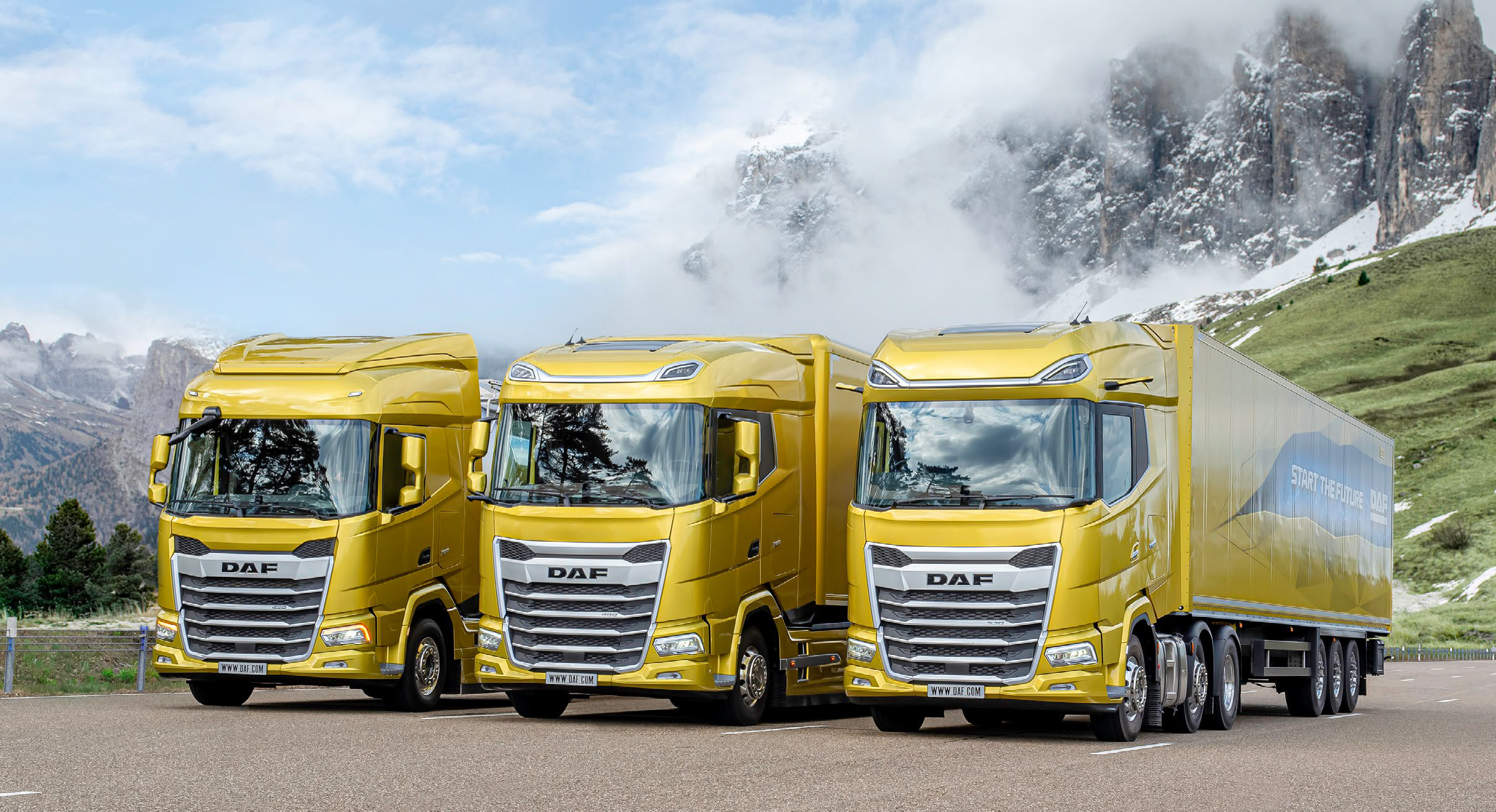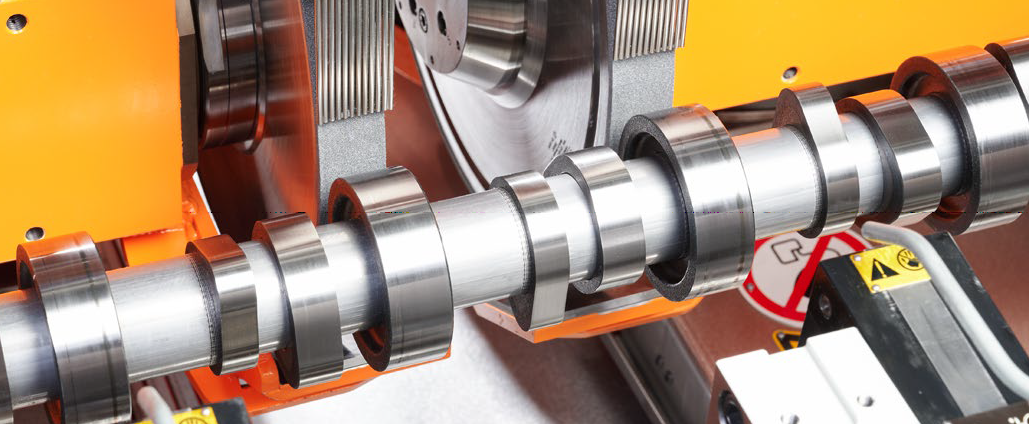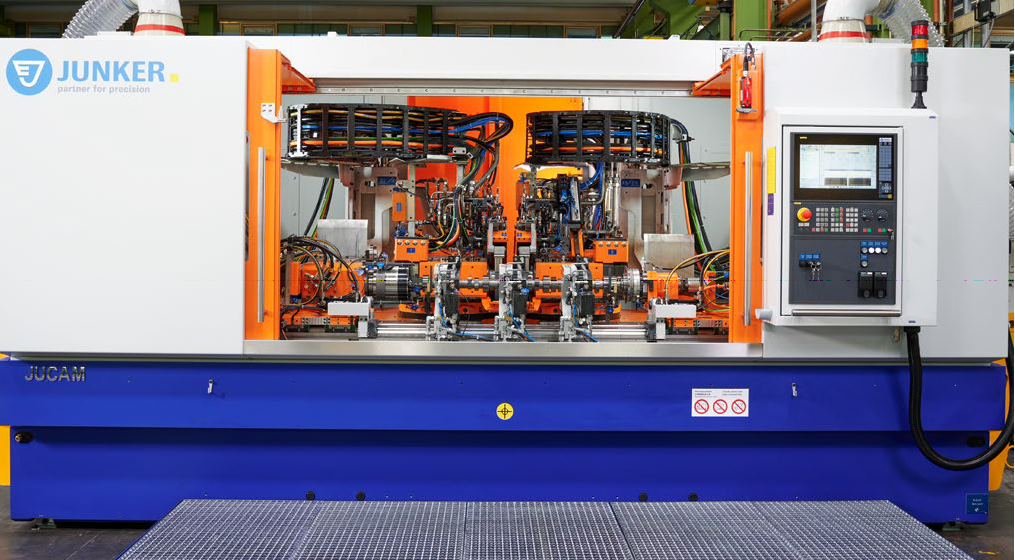
Effective complete machining of DAF camshafts for commercial vehicles is based on the sophisticated interplay between high performance linear motors, ultra-precise in-process measuring systems and easily accessible components. The Dutch truck manufacturer is extending its camshaft machining operations by adding the modular concept on the new platform 6.
Comfortable furnishings, long maintenance intervals and excellent driving dynamics are the reasons for purchasing reliable DAF trucks. DAF praises its customers with the highest level of efficiency, maximum driving comfort and a high residual value.
The precisely machined camshafts ensure that the engines of commercial vehicles function faultlessly and constantly for a high mileage. With the JUCAM 6L, these are machined efficiently and ultra precisely in a single clamping set-up. "The camshafts are used in the six-cylinder diesel engine series of XF and CF models,“ explained Wannes Bloemen, Senior Production Engineer, from DAF in Eindhoven, the Netherlands.
Short cycle times ensure efficiency

Two wheelheads with four grinding spindles were installed in the grinding machine. The camshaft is clamped between centers, an integrated driver and a retractable jaw chuck. The ultra-precise in-process measuring systems ensure perfect radial and longitudinal positioning. First the bearings are machined, followed by the pump cams and inlet and outlet cams. An additional step to deburr the elements is not required.
JUNKER‘s non-cylindrical grinding machine, JUCAM, provides process reliability by machining in a single clamping set-up. Bloemen said, "Halving the cycle times while complying with the tolerances is an optimum result.“
Top speeds are achieved especially with the installed linear motors and the proven hydrostatic guides, as well as a reliable coolant system. The complete machining does away with the need for repeated loading and unloading. Within a defined spectrum of workpieces, the grinding machine can be easily set-up without mechanical retooling.
Complete machining ensures process stability
Maximum quality while adhering to all tolerance specifications and the greatest process stability result in efficient truck camshaft machining. Bloemen confirmed:
"The modular and ergonomic design of the grinding machine and therefore the accessibility to the components are very important to us. For example the modular units for the hydraulic and coolant system. The associated flexibility and ease of maintenance were pivotal in DAF‘s decision to purchase,“ he said.

The installed in-process measuring systems ensure a precise profile contour on the cylindrical and non-cylindrical elements alike. These allow the data to be incorporated into the grinding process in real time. Even the smallest deviations are corrected immediately. The JUCAM machine runs fully automatically in continuous operation. The high-speed grinding machine is loaded by a robot and unloaded by a gantry loader.
Reliable, long-established partnership
Bloemen affirmed that they have implemented several projects together: "Junker is a reliable partner with a very good technical understanding who achieves its objectives at every stage in the project“ he said. With a young, open-minded team, the truck manufacturer has been working with JUNKER for over 20 years and implements its projects using a constructive and targeted approach.
Contact Details
Related Glossary Terms
- centers
centers
Cone-shaped pins that support a workpiece by one or two ends during machining. The centers fit into holes drilled in the workpiece ends. Centers that turn with the workpiece are called “live” centers; those that do not are called “dead” centers.
- chuck
chuck
Workholding device that affixes to a mill, lathe or drill-press spindle. It holds a tool or workpiece by one end, allowing it to be rotated. May also be fitted to the machine table to hold a workpiece. Two or more adjustable jaws actually hold the tool or part. May be actuated manually, pneumatically, hydraulically or electrically. See collet.
- coolant
coolant
Fluid that reduces temperature buildup at the tool/workpiece interface during machining. Normally takes the form of a liquid such as soluble or chemical mixtures (semisynthetic, synthetic) but can be pressurized air or other gas. Because of water’s ability to absorb great quantities of heat, it is widely used as a coolant and vehicle for various cutting compounds, with the water-to-compound ratio varying with the machining task. See cutting fluid; semisynthetic cutting fluid; soluble-oil cutting fluid; synthetic cutting fluid.
- grinding
grinding
Machining operation in which material is removed from the workpiece by a powered abrasive wheel, stone, belt, paste, sheet, compound, slurry, etc. Takes various forms: surface grinding (creates flat and/or squared surfaces); cylindrical grinding (for external cylindrical and tapered shapes, fillets, undercuts, etc.); centerless grinding; chamfering; thread and form grinding; tool and cutter grinding; offhand grinding; lapping and polishing (grinding with extremely fine grits to create ultrasmooth surfaces); honing; and disc grinding.
- grinding machine
grinding machine
Powers a grinding wheel or other abrasive tool for the purpose of removing metal and finishing workpieces to close tolerances. Provides smooth, square, parallel and accurate workpiece surfaces. When ultrasmooth surfaces and finishes on the order of microns are required, lapping and honing machines (precision grinders that run abrasives with extremely fine, uniform grits) are used. In its “finishing” role, the grinder is perhaps the most widely used machine tool. Various styles are available: bench and pedestal grinders for sharpening lathe bits and drills; surface grinders for producing square, parallel, smooth and accurate parts; cylindrical and centerless grinders; center-hole grinders; form grinders; facemill and endmill grinders; gear-cutting grinders; jig grinders; abrasive belt (backstand, swing-frame, belt-roll) grinders; tool and cutter grinders for sharpening and resharpening cutting tools; carbide grinders; hand-held die grinders; and abrasive cutoff saws.
- tolerance
tolerance
Minimum and maximum amount a workpiece dimension is allowed to vary from a set standard and still be acceptable.
